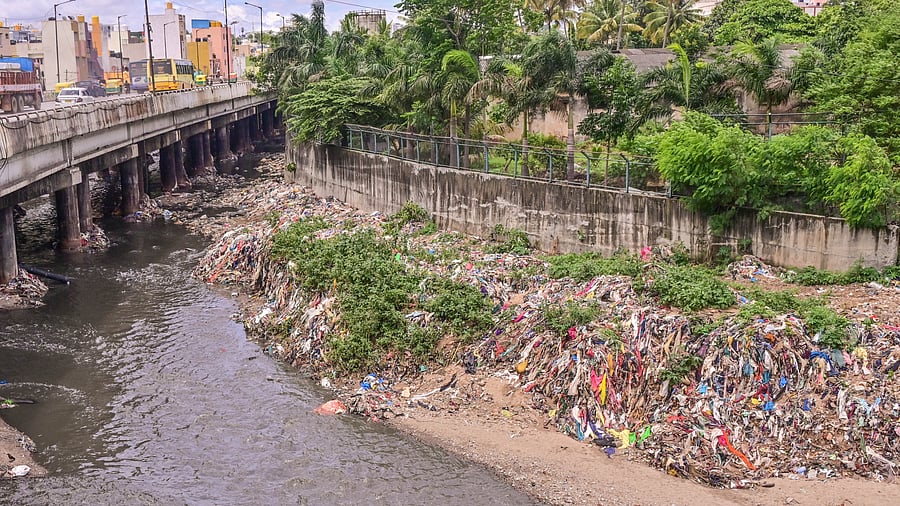
The rajakaluve near Deepanjalinagar is filled with silt, hampering flow of rainwater.
Credit: DH PHOTO/Prashanth HG
Bengaluru: M Maheshwar Rao, Chief Commissioner of the Bruhat Bengaluru Mahanagara Palike (BBMP), has asked officials to revive the project for installing sluice gates at lakes.
Speaking to zonal officials on Monday, Rao said that only 13 lakes in the city currently have sluice gates.
"In lakes with sluice gates, the water level should be lowered in advance to accommodate rainwater. Plans must be prepared to gradually install sluice gates in the remaining lakes and desilt those that have not yet been cleaned,” he said.
DH had reported in April that nearly three years after its announcement, the plan to install sluice gates at 100 lakes in the city remained only on paper.
The project was proposed in 2022 after close to 100 lakes overflowed, leaving many parts of the city flooded.
Zonal-level works
Rao also directed officials to immediately take up flood-mitigation works at the zonal level.
Stressing the importance of ensuring smooth water flow in stormwater drains, he instructed officials to carry out regular desilting of the drains.
"Out of the 210 flood-prone areas identified across the city, issues at 166 locations have already been addressed. Zonal commissioners are tasked with verifying and confirming these works,” he said. He also ordered immediate interim measures for the remaining 44 locations.
"The Traffic Police Department has provided a list of spots where stagnant water on roads causes heavy traffic during rains. Appropriate steps should be taken to prevent water accumulation at these locations. Continuous desilting and cleaning of shoulder drains must also be carried out,” he noted.
He further asked officials to promptly address tree fall complaints and ensure that pedestrian pathways are cleared for safe and smooth movement.
Officials have also been instructed to identify alternate lands for transferring waste from auto tippers to compactors. "Currently, waste is transferred from auto tippers to compactors at roadside transfer points. These transfer points must be relocated to more suitable areas,” Rao said.
